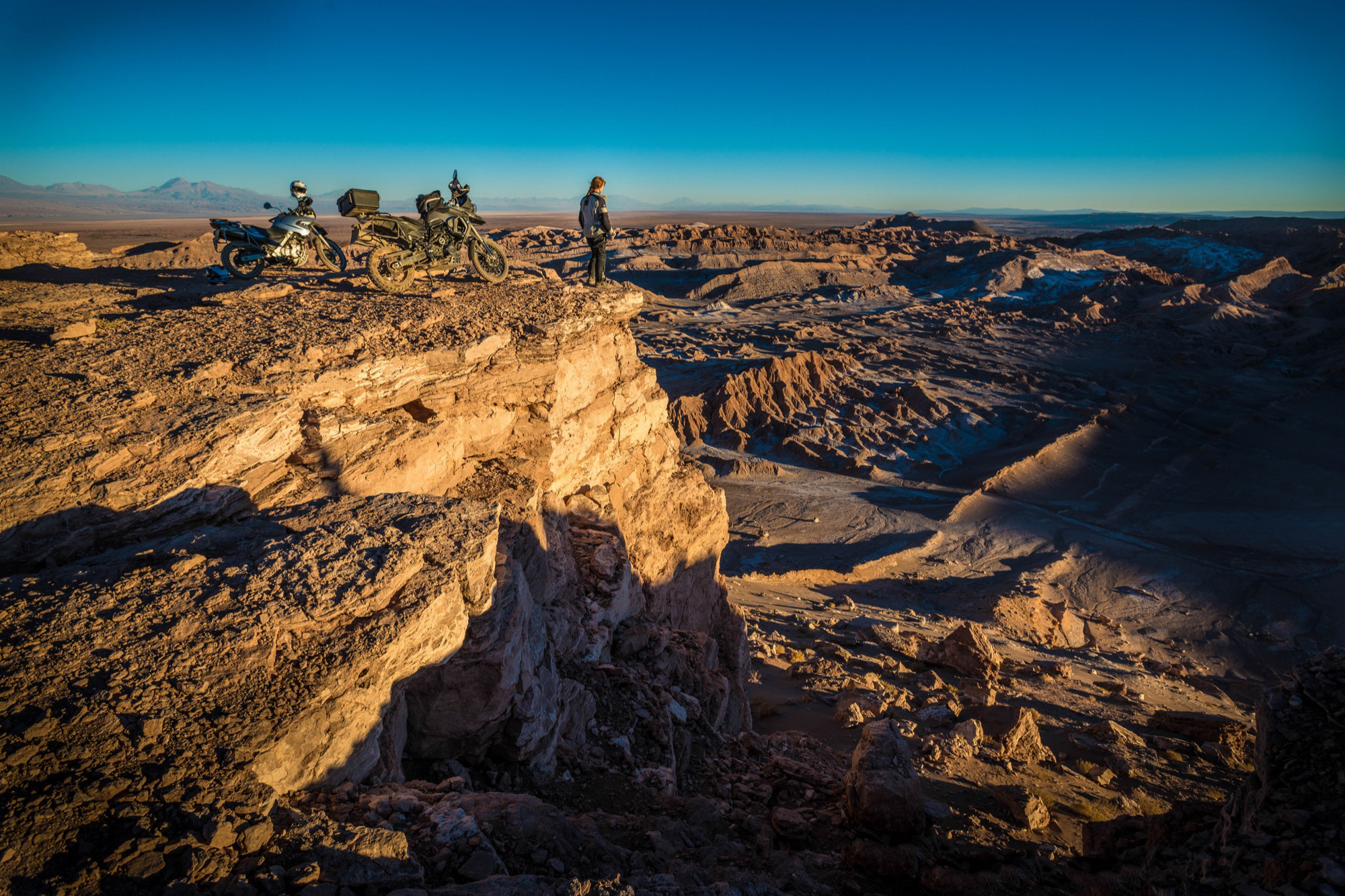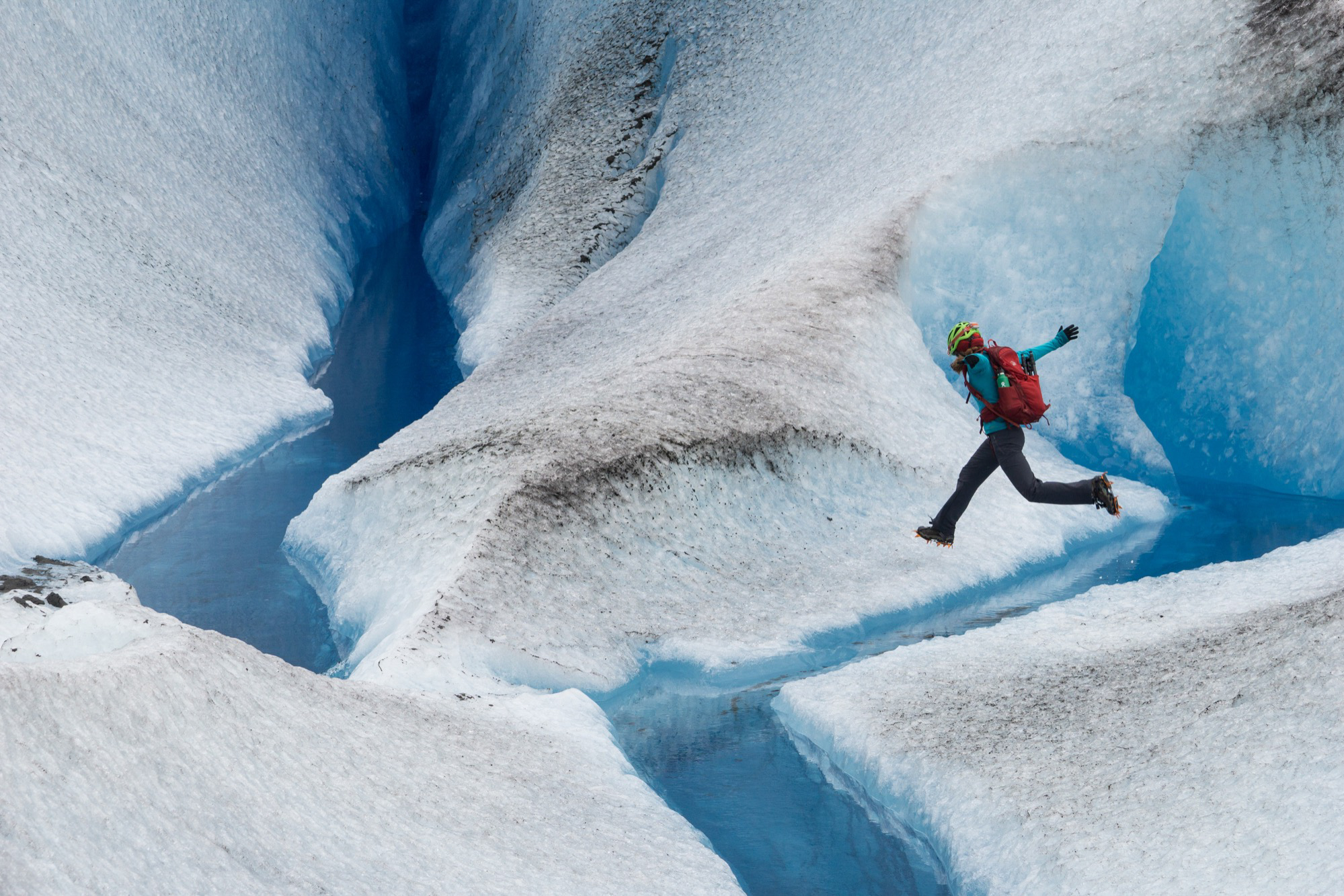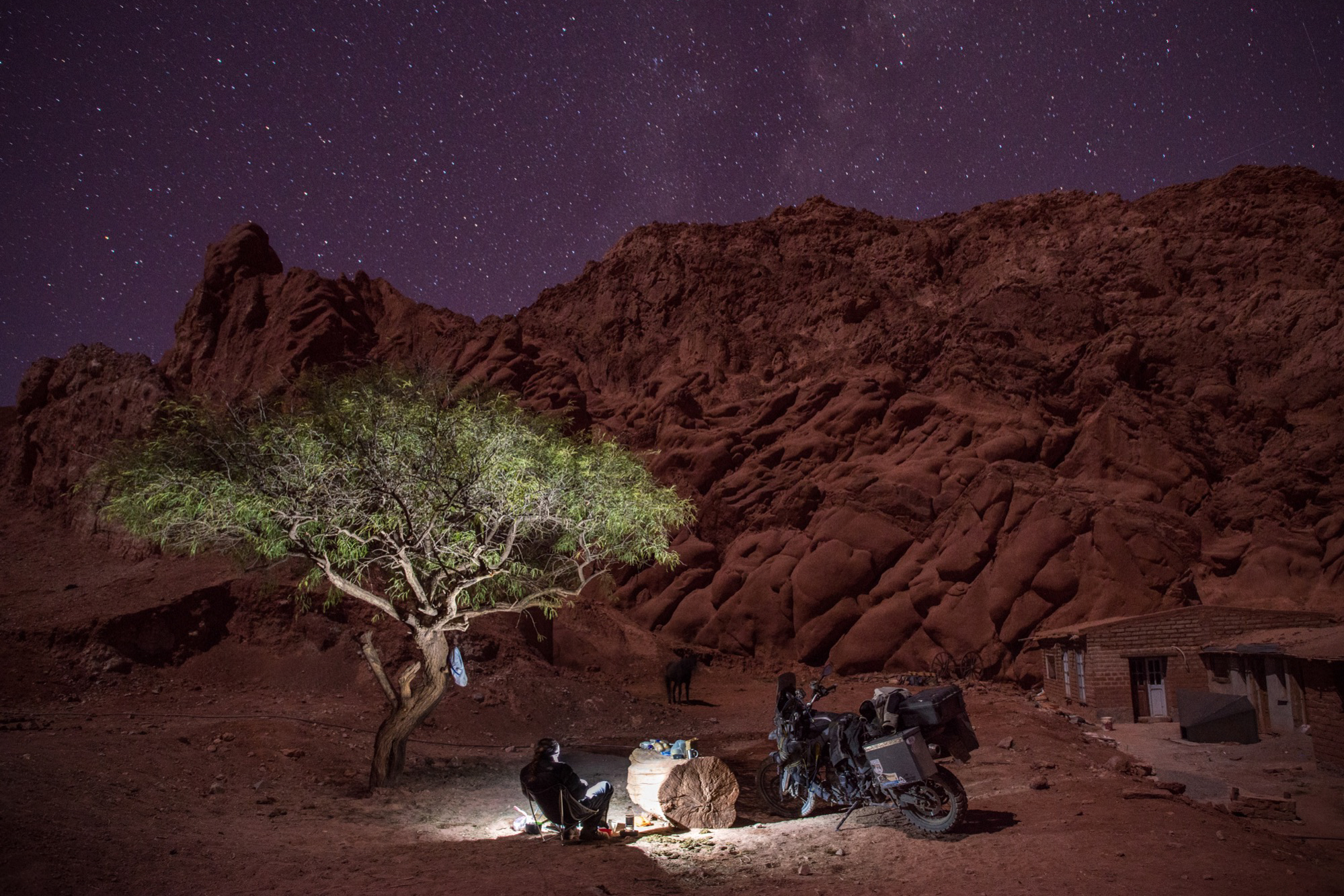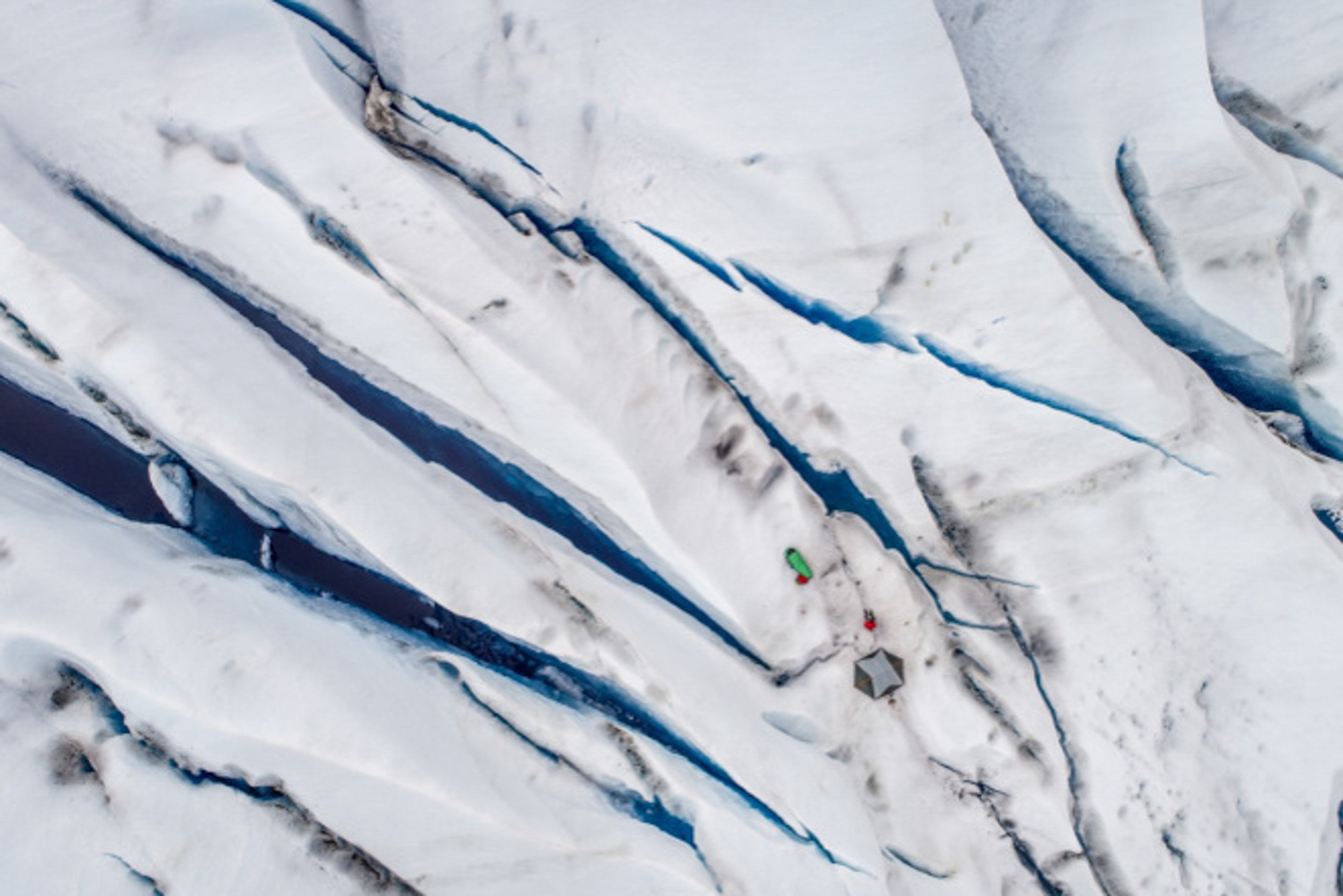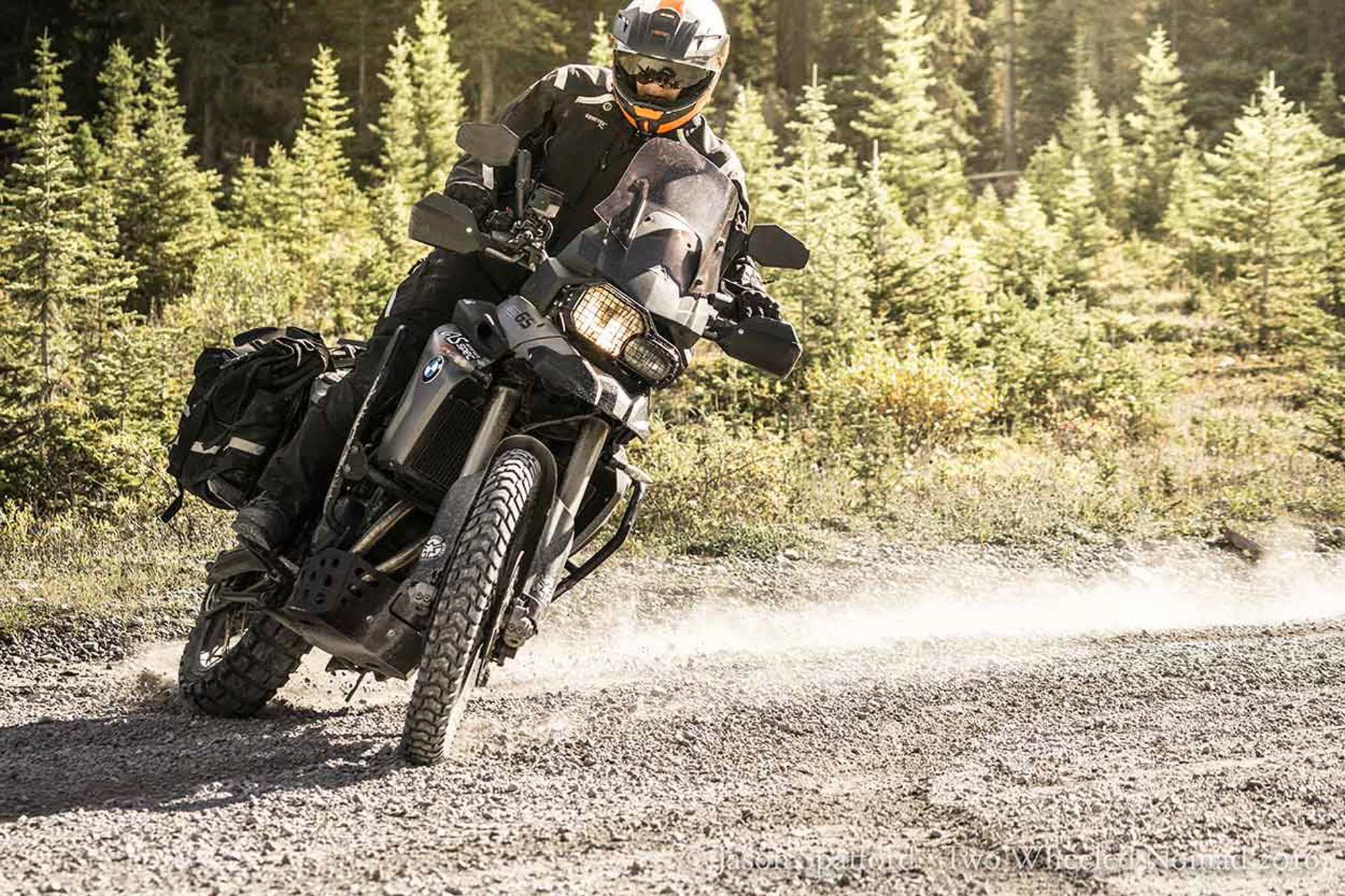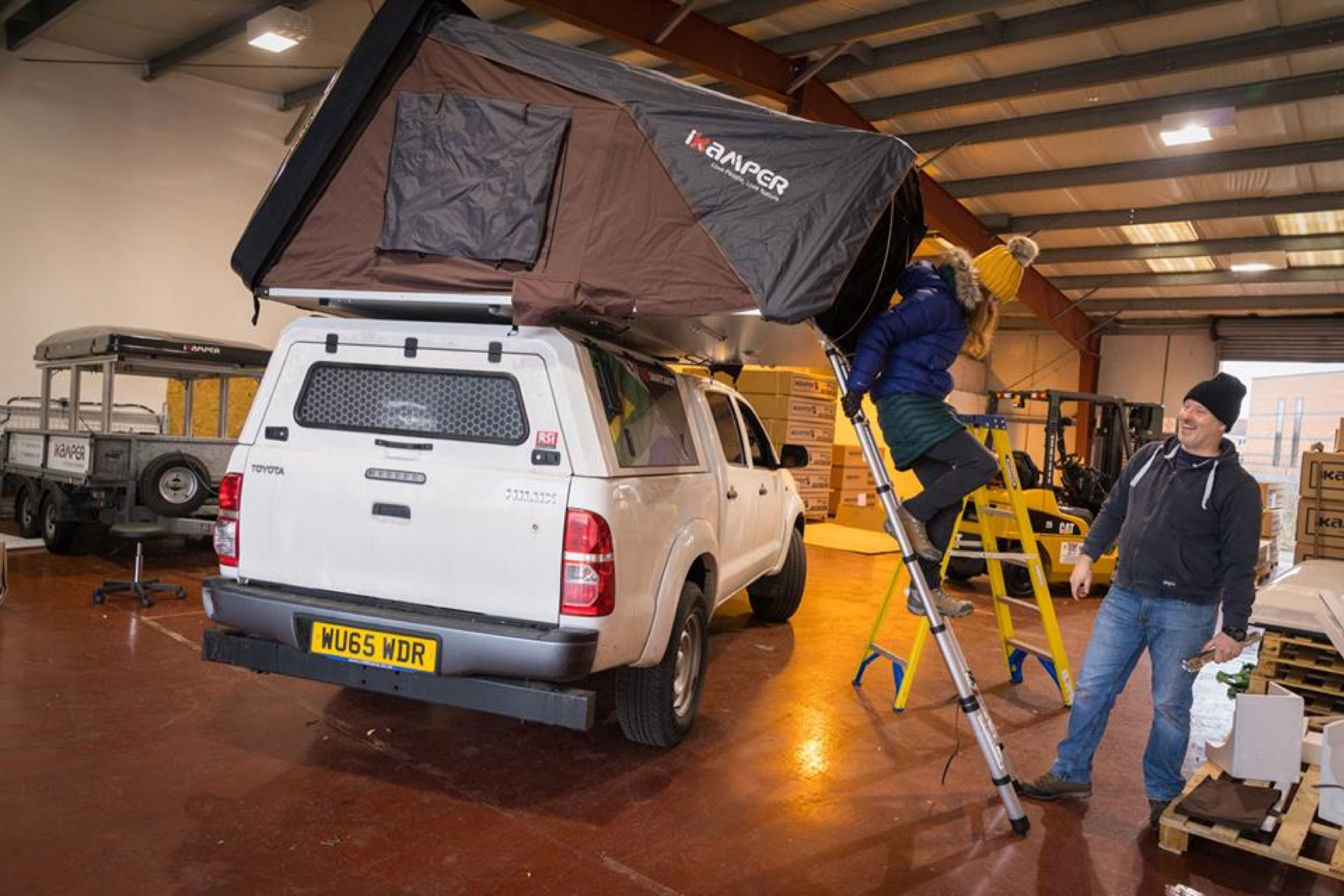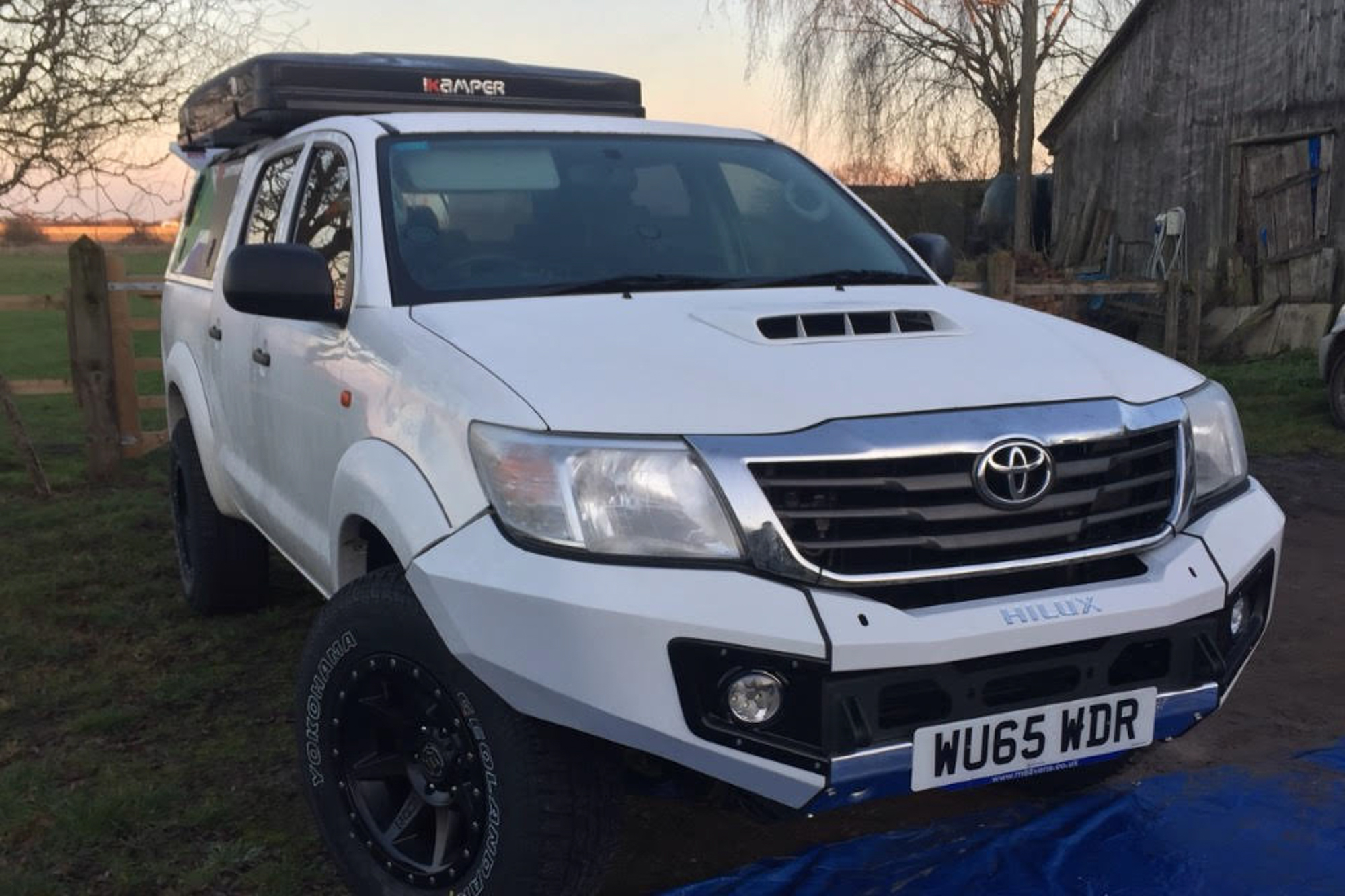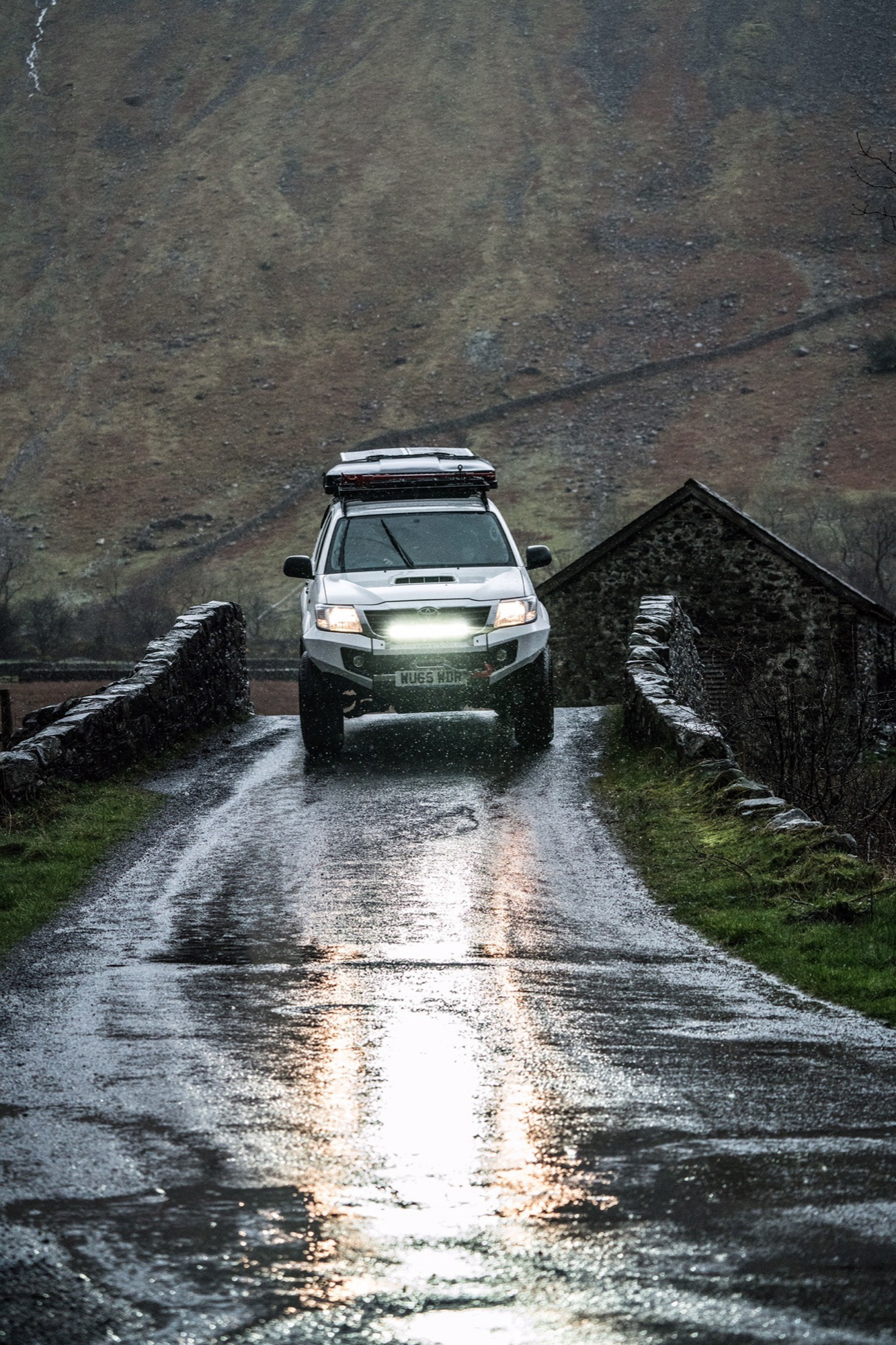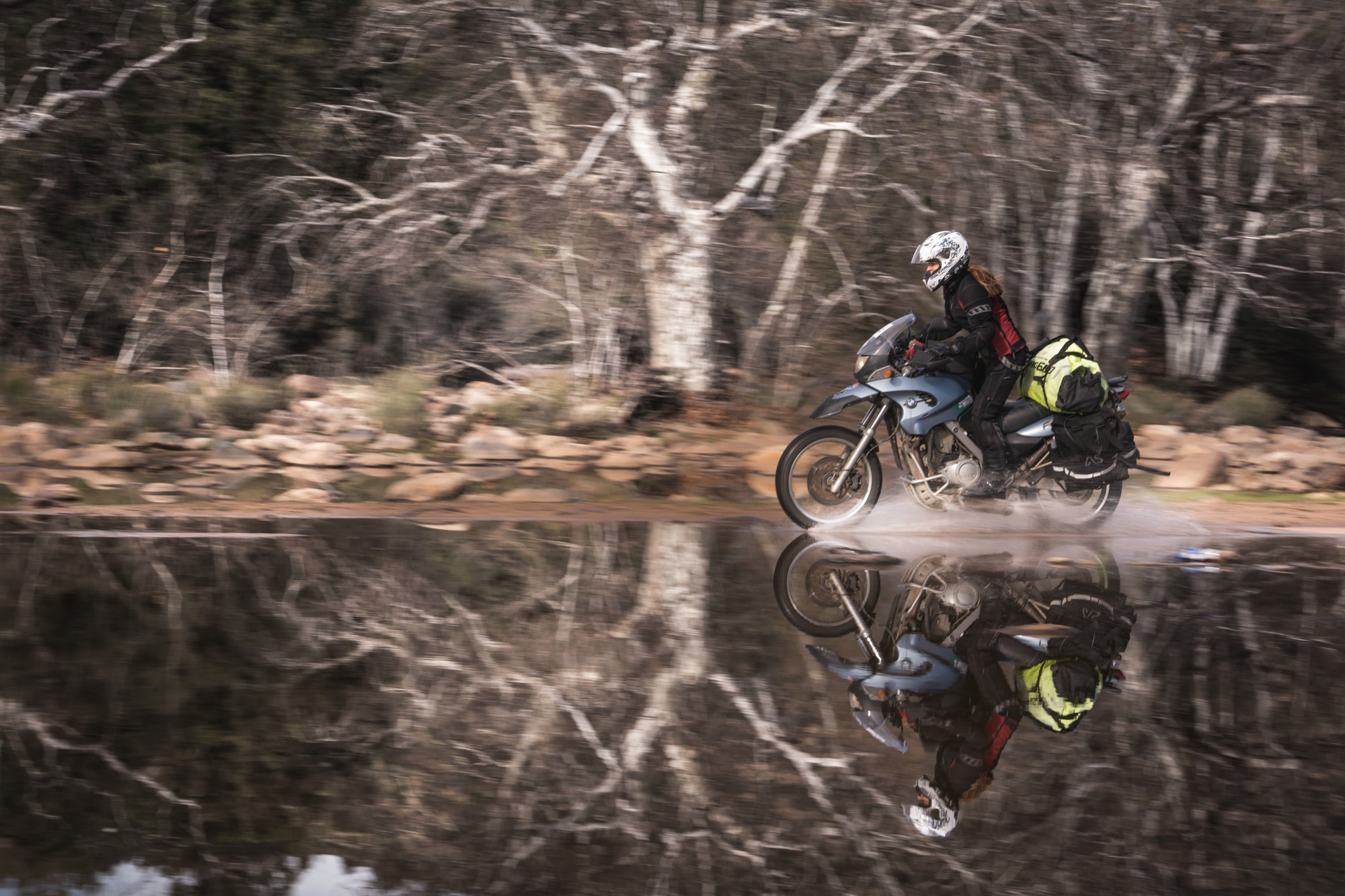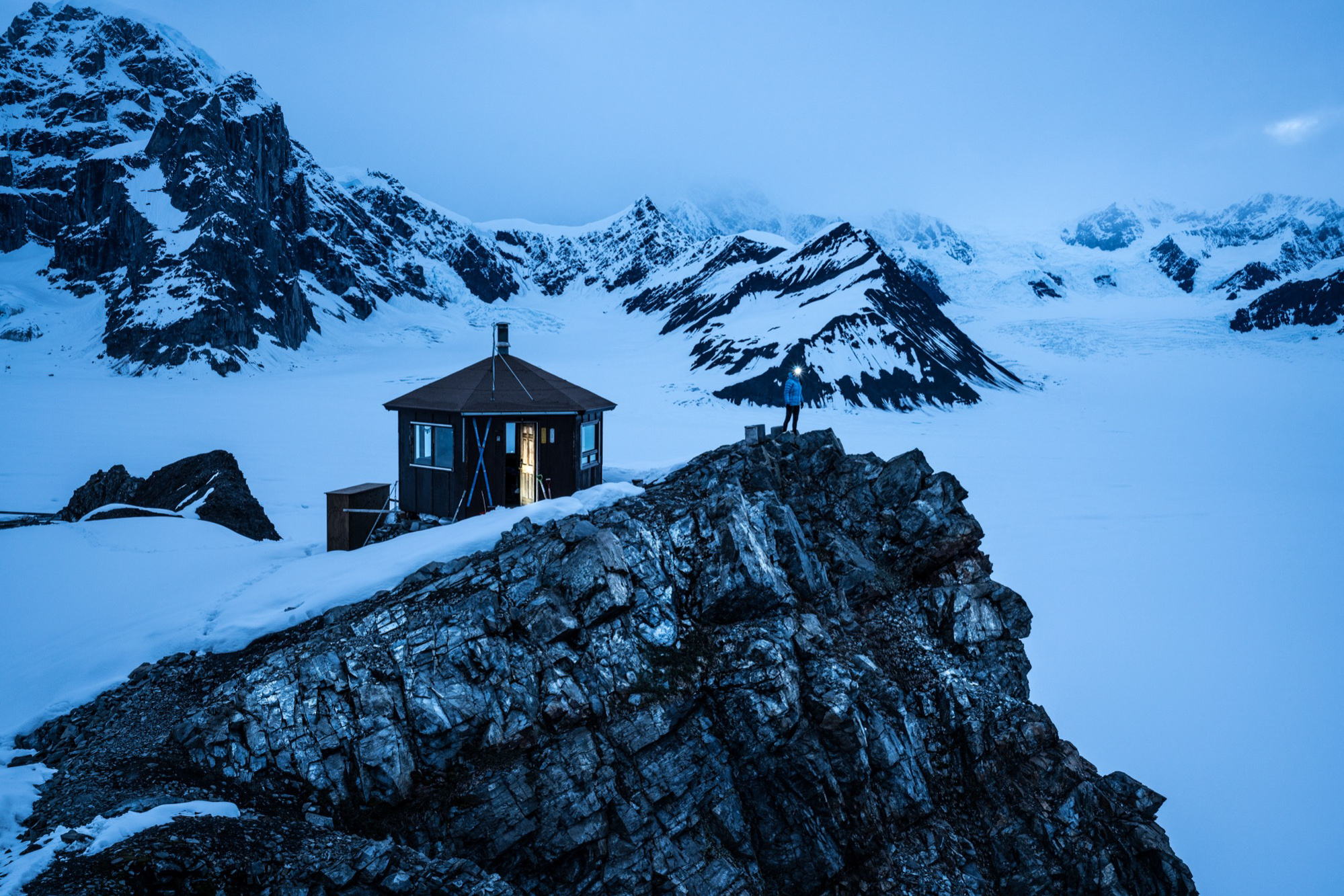Photography by Jason Spafford
After combining our love for diving and photography since childhood, during a decade of experiencing the world below the waterline, a change was eventually overdue. With a lifelong passion for taking pictures still in focus, we hung up the fins and decided on a big one. Long story short, sold our cottage in the country, pared down possessions to a few boxes, and packed what we thought we’d need on the bikes. We’d lived a few trips, but this one took the prize: a life-changing adventure ensued lasting over four years.
The moment I got my ticket, which stemmed from winning a motorcycle taster session, I sourced Pearl—a factory-lowered 2001 BMW F 650 GS on eBay—chiefly because I liked the colour. She matched my helmet, much to Jason’s exasperation. Amusingly, he soon utilised Pearl as the pack mule and reserved his 2008 BMW F 800 GS for “tech” as Jason calls it: a camera, its lenses, and a drone. Plus anything else a photographer can get away with carrying on a dual sport bike.
Minimal ride time under my belt required a giant leap of faith into the unknown. Still, being thrown in the deep end was my norm. Not exactly a natural rider, I learned heuristically. Although it won’t be shocking to learn that I sporadically refused to trust my steed in the soft stuff or take Jason’s sage advice and control at the reins. This was a bone of contention for him, which led to some initial discomfort, but such is life on the road when your riding skills differ. You get back on your bikes, and you ride it out together because you need to, and you want to. Quite the rollercoaster ride, it’s the most empowering learning curve I’ve been on to date.
Magically, the bikes defined the trip, what we longed for, who we were. It’s the gruelling satisfaction of big distance riding that made the journey hard but euphoric—the hard is what makes it so great. Throughout long, beautiful days in the saddle, I adored how the motorcycles frequently magnetised people to us. You make contact, share, learn, and grow. It’s integral to what makes me happy.
Occasionally, the rub of motorcycle travel would take its toll. Upon reaching a trailhead in the mountains, for instance, we’d often yearn for a day-hike or even a burst of through-hiking. Namely, give ourselves a break from munching hundreds of miles to get there. But where do you leave your precious transport? Rarely is there anywhere in removed places to secure your gear and valuables, let alone the bikes.
Added to that was the incapacity to carry enough provisions to stay in a remote spot much beyond 48 hours. All three times we descended on Death Valley, we ran out of water after a day and saw ourselves at the mercy of four-wheeled travellers. Despite managing and getting on with it, now and again, it gave rise to an opportunity lost; we had to forego sinking into those faraway places.
Such drawbacks reflected on now were largely inconsequential, merely part and parcel of a two-wheeled road trip—they mattered little and less when reaping the highs and phenomenal firsts bestowed on us over 80,000 miles across 21 countries. More than anything, it was biking bliss.
Excitingly, our next endeavour, the Mega Transect, will see us journey from the UK up to Iceland, through Europe and down the African continent. But are we to jump back in the saddle, or think about embracing a solution that would eliminate the inherent pitfalls of motorcycle travel? Perhaps something that after myriad miles of rough roads would leave us feeling more rested, less wrecked, employing a greater level of comfort or even some refinement. Something that supplies self-generating power and refrigeration beyond a double-walled water bottle and which increases security ten-fold and permits a lock-up and walk away from your rig freedom. A 4WD expedition vehicle encompasses all that and some.
After some deliberation, we sought timely advice from those who had done precisely what we intended to do. Tapping into expertise from the 4WD industry pros, we followed our instincts and invested in a 2015 Toyota Hilux, affectionately known as White Rhino.
The Rhino was easy to source at a reasonable price in England, though the fuel economy could be better, but at Africa’s prices that won’t matter as much. Plus the Hilux is common over there, which should hopefully make the maintenance and any repairs relatively straightforward.
Reassuringly, Dan Grec (a friend who recently circumnavigated Africa for two years), responded to our concerns about attracting unwanted attention in an expensive-looking vehicle through Africa: “Don’t take this the wrong way, guys, but your Hilux won’t be the most expensive thing on the road.” He’s right, and of course, it will look soon look ditched courtesy of the dust and dirt.
While the ability to carry adequate supplies to stay off the beaten path will add a newfound harmony, it wasn’t the only deciding factor in switching to four wheels. No longer top of the food chain, rock up to any African safari park on two wheels and you’ll promptly be sent on your merry way.
For every game park on our wish list, we’d have to find and pay for a place to secure the motos only to fork out further funds to hire a vehicle and guide. Not to mention that gnawing feeling that never quite leaves you when you leave your bikes somewhere unfamiliar. I’ve been governed by touristic itineraries on safari in South and East Africa before; being hemmed in by 12 trucks around an unassuming white rhino isn’t high on my must-see list this time around—the horned or Toyota varieties as it goes.
Yup, I admit it. The level of joy and splendour afforded by a rooftop tent, portable fridge and shower, solar power with lighting, a fold-out kitchen, and drawer loads of lockable storage on top is bound to bring overlanding bliss.
Indeed, long-distance biking dictated only the items that mattered, the multi-purpose and miniaturised. Everything packed was considered because space and weight came at a premium. Having mastered living on the road with only the essentials by living out of two panniers for as long as we have, the minimalistic mindset is unlikely to disappear. And that’s a good thing. But the focus on what we don’t need to pack will become a new existence of what we’d like to pack.
Alas, there were places we didn’t reach on our Americas trip because of, ahem, my riding ability. Particularly in the early days when I was still learning to hold my own on the technical stretches. Inevitably, it meant we compromised a few times.
Our new beast—complete with all-terrain tyres, recovery equipment, and a pending snorkel—should take us practically anywhere we can negotiate him through. And the previous stresses incurred from contrasting riding abilities will be left behind.
Moreover, our backsides can kiss goodbye to saddle soreness. Instead, we’ll emerge full of vigour after 300 truck miles. Such was life, feeling wiped out after a day’s worth of situational awareness astride my motorcycle. Vulnerability induced excitement aside, there is always more at risk on two wheels than four among other road users.
Will I miss having rain- and humidity-obscured vision, cruise missile insects smacking my face at 50 mph, raging winds and snow flurries that siphon all feeling from the fingers? I expect not. Kitted in just my regular clothing will be a strange one. I’m sure the idea of being protected, cocooned in air-conditioning, catered to, will grow on me.
That said, I will still ache like crazy for my bike. Travelling has always been transformative; motorcycling the Americas—taking in Antarctica to the northernmost navigable road in Alaska—was pure frontier.
Undeniably, it’d be naïve to think we won’t encounter an array of challenges born from a 4WD journey to which other modes of transport don’t succumb. We’ve evolved after every trip though, prioritising our wants and needs for the next one, and what matters most is that you’re out there doing it.
Right now, there is nothing more appealing than staying self-sufficient in our truck with the ability to take off and come back to base. After loading up on gear and new aspirations, it’s time to celebrate our good fortune and be thankful to White Rhino for facilitating a new era: to stuff ourselves with everything an unscripted, four-wheeled life has to give.







